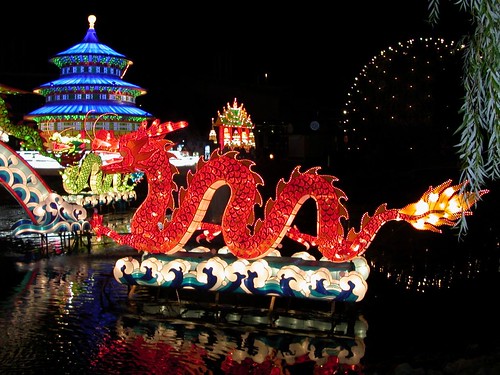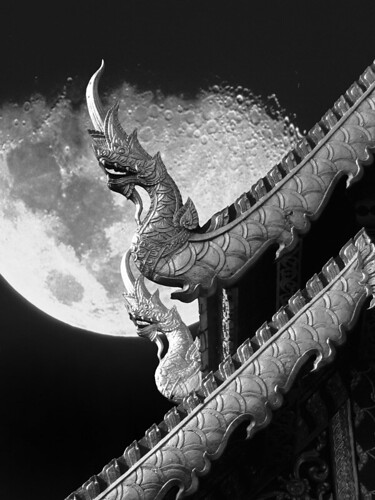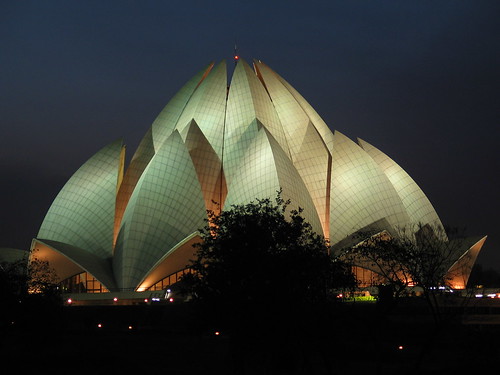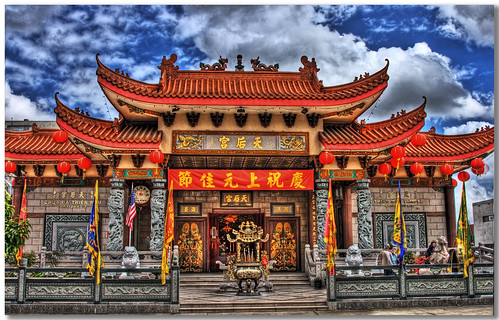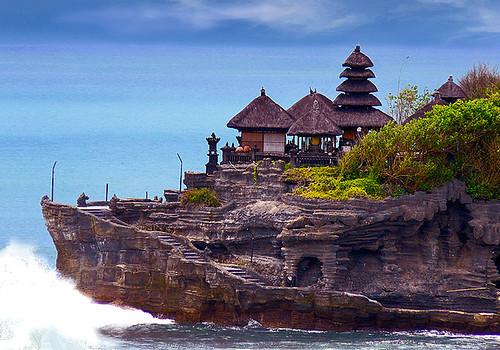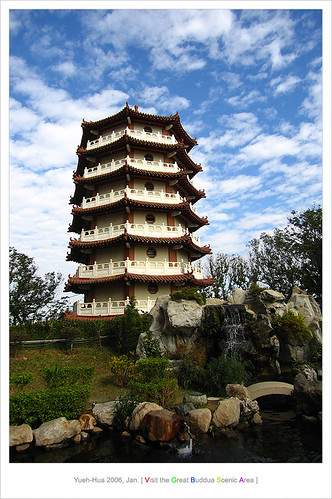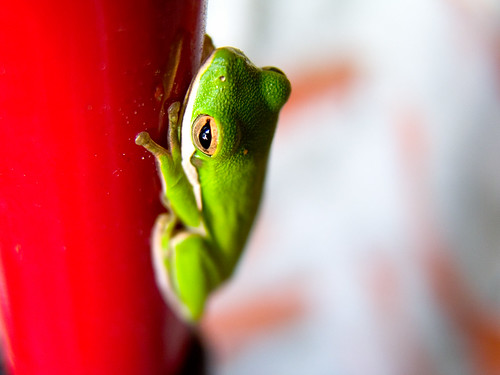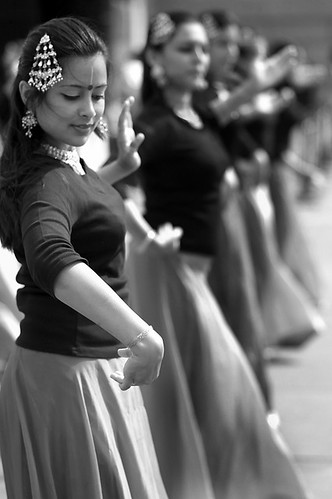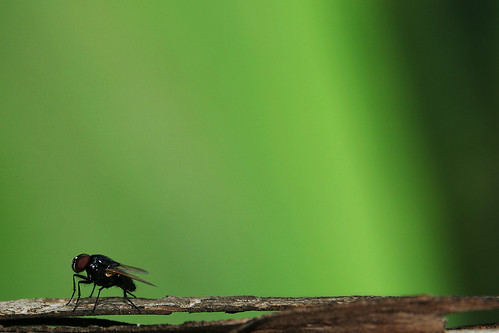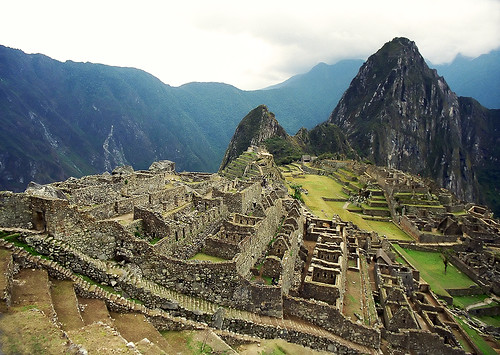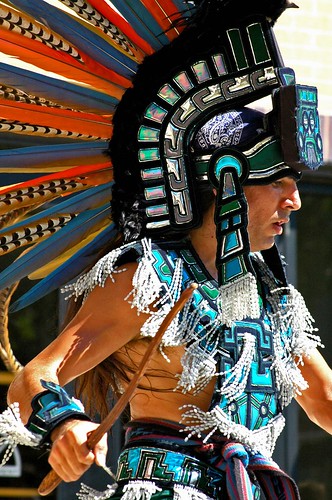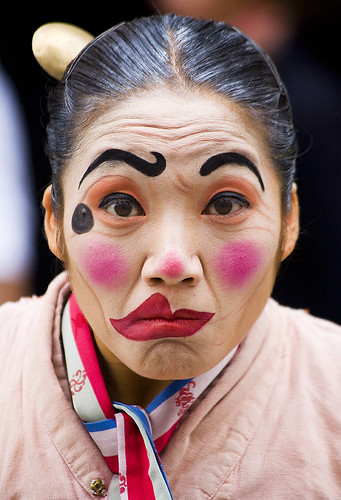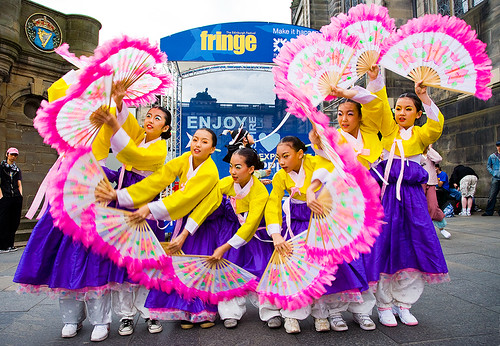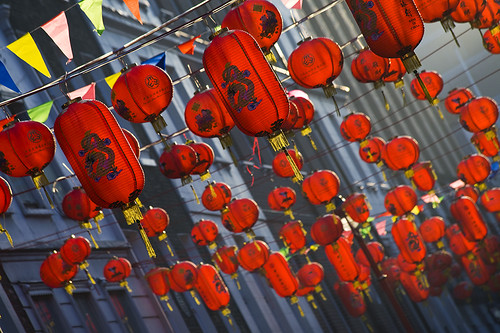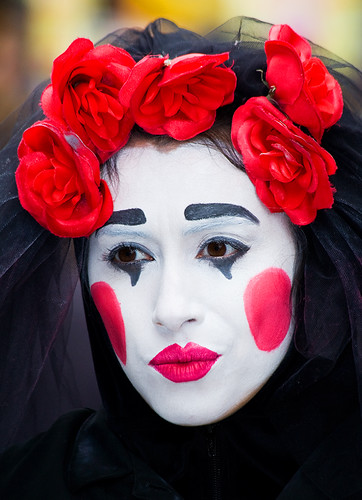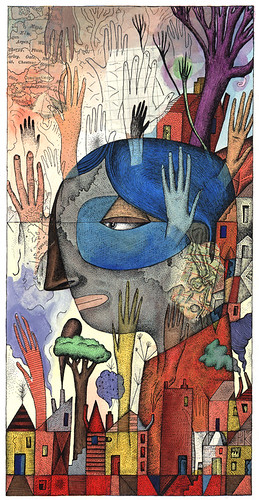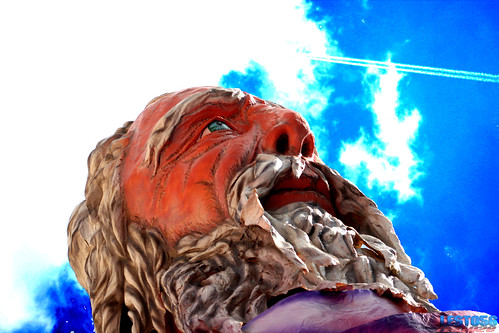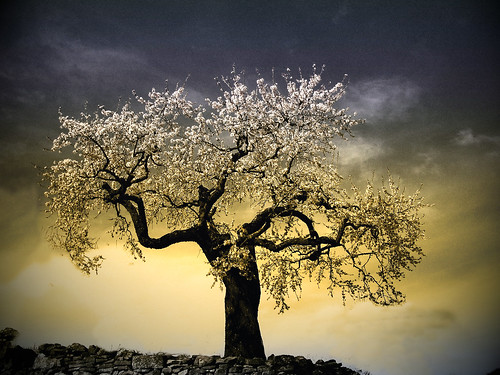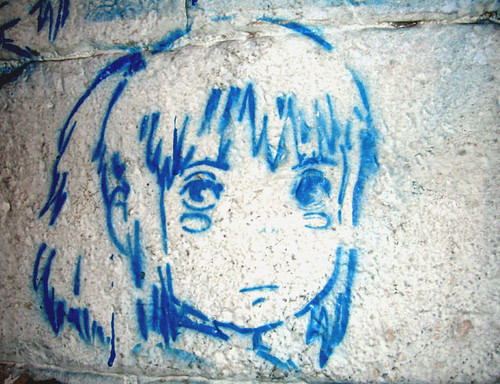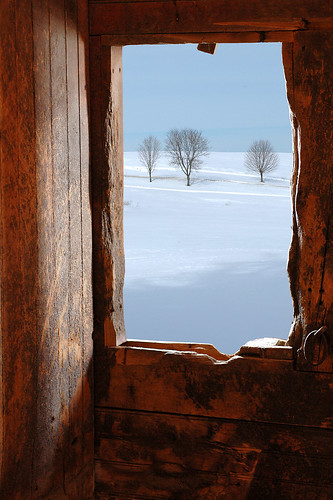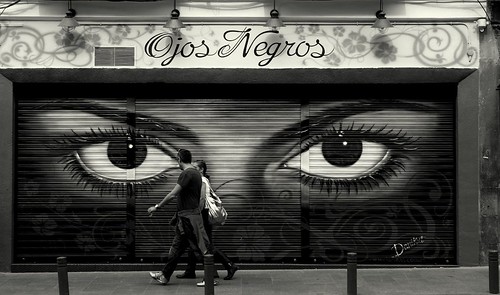.
. .
. . .
. . . .
. . . . .
. . . . . .
. . . . .
. . . .
. . .
. .
.
miércoles, abril 30, 2008
DRAGON FACE
Morelia viridis, the green tree python, is a species of python found in New Guinea, islands in Indonesia, and Cape York Peninsula in Australia.
| Morelia viridis | ||||||||||||||||||
|---|---|---|---|---|---|---|---|---|---|---|---|---|---|---|---|---|---|---|
 | ||||||||||||||||||
| Scientific classification | ||||||||||||||||||
| ||||||||||||||||||
| Binomial name | ||||||||||||||||||
| Morelia viridis (Schlegel, 1872) | ||||||||||||||||||
| Synonyms | ||||||||||||||||||
|
Adults average 90-120 cm (3-4 feet) in length, with a maximum grow to about 213 cm (7 ft). The supralabial scales have thermoreceptive pits.
The species was first described by Hermann Schlegel in 1872. Although Raymond Hoser claims to have described a subspecies of this python, none are currently recognized. It is often informally named as the green tree python.
Geographic range
Found in Indonesia (Misool, Salawati, Aru Islands, Schouten Islands, most of Western New Guinea), Papua New Guinea (including nearby islands from sea level to 1,800 m elevation, Normanby Island and the d'Entrecasteaux Islands) and Australia (Queensland along the east coast of the Cape York Peninsula). The type locality given is "Aroe-eilanden" (Aru Islands, Indonesia).
This species is sympatric with M. spilota and the two often compete in the same ecological niche.
Habitat
Rainforests, bushes and shrubs.
Conservation
The largest threat to the species is habitat destruction, particularly in Western New Guinea, which is currently occupied by Indonesia and is being logged by the Indonesian government. Many of these old growth forests that they live in are also inhabited by native papuan tribes who eat the snakes.
Behavior
Primarily arboreal, these snakes have a particular way of resting in the branches of trees; they loop a coil or two over the branches in a saddle position and place their head in the middle. This trait is shared with the emerald tree boa, Corallus caninus, of South America. This habit, along with their appearance, has caused people to confuse the two species when seen outside their natural habitat.
Feeding
The diet consists of small mammals, such as rodents, and sometimes reptiles. Despite many references in the literature, it does not include birds. Switak conducted field work on this issue and in examining stomach contents of more than 1,000 animals he did not find any evidence of avian prey items. Prey is captured by holding onto a branch using the prehensile tail and striking out from an s-shape position.
Reproduction
Oviparous, with 12-25 eggs per clutch. The eggs are incubated and protected by the female, often in the hollow of a tree. Hatchlings are usually lemon yellow with broken stripes and spots of purple and brown, although golden or orange individuals may appear in the same clutch. In all cases, the color soon turns to green as snakes mature.
Captivity
These snakes are often bred and kept in captivity, although they are usually considered an advanced species. This is due to their specific care requirements, but once these are met they thrive in captivity. The second reason they are considered advanced is from wild caught individuals that often carry parasites and rarely tame down, although captive bred individuals usually calm down.
http://en.wikipedia.org/wiki/Morelia_viridis
DRAGON FACE
martes, abril 29, 2008
SWAMINARAYAN AKSHARDHAM TEMPLE INNEW DELHI
Akshardham is a Hindu temple complex in Delhi, India. It was consecrated in November 2005 by Pramukh Swami Maharaj, the spiritual leader of BAPS (the organization responsible for the creation of Akshardham) and ceremoniously dedicated to the nation by the President of India, Abdul Kalam and the Prime Minister, Manmohan Singh. Sitting on the banks of the Yamuna River, adjacent to the proposed Commonwealth Games village, the complex features a large monument, crafted entirely of stone, permanent exhibitions on Bhagwan Swaminarayan and Hinduism, an IMAX, musical fountain, and large landscaped gardens.
The main building at the centre of the complex is a 141-foot-high monument to Bhagwan Swaminarayan. Designed according to ancient Vedic texts known as the Sthapatya-Shastra, it features a blend of architecutral styles from across India. Within the monument, under the central dome, there is an 11-foot-high gilded image of Bhagwan Swaminarayan. He is surrounded by the gurus of the sect. The building itself is constructed entirely from Rajasthani pink sandstone and Italian Carrara marble, and features no steel or concrete. Its height and location on the banks of the Yamuna mean its presence is felt from afar, and its carved details of flora, fauna, dancers, musicians and deities covering its surfaces from top to bottom, leave most visitors in awe.
http://en.wikipedia.org/wiki/Akshardham_%28Delhi%29
SWAMINARAYAN AKSHARDHAM TEMPLE INNEW DELHI
LOTUS TEMPLE
The Bahá'í House of Worship in Delhi, India, popularly known as the Lotus Temple, is a Bahá'í House of Worship and also a prominent attraction in Delhi. It was completed in 1986 and serves as the Mother Temple of the Indian subcontinent. It has won numerous architectural awards and been featured in hundreds of newspaper and magazine articles.
Inspired by the lotus flower, its design is composed of 27 free-standing marble clad "petals" arranged in clusters of three to form nine sides. The architect was an Iranian, who now lives in Canada, named Fariborz Sahba. The major part of the funds needed to buy this land was donated by Ardishír Rustampúr from Hyderabad, who gave his entire life savings for this purpose in 1953.
Nine doors open onto a central hall, capable of holding up to 2,500 people. Slightly more than 40 meters tall, its surface shining white marble, the temple at times seems to float above its 26 acre (105,000 m²; 10.5 ha) nine surrounding ponds. The site is in the village of Bahapur, in the National Capital Territory of Delhi. Since its inauguration to public worship in December 1986, the Bahá'í House of Worship in New Delhi has, as of late 2002, attracted more than 50 million visitors, making it one of the most visited buildings in the world. Its numbers of visitors during those years surpassed those of the Eiffel Tower and the Taj Mahal. On Hindu holy days, it has drawn as many as 150,000 people; it welcomes four million visitors each year (about 13,000 every day or 9 every minute).
http://en.wikipedia.org/wiki/Lotus_Temple
LOTUS TEMPLE
THIEN HAU TEMPLE
Thien Hau Temple, also known as Chùa Bà Thiên Hậu in Vietnamese and as Tiān Hòu Gōng (天后宫) in Chinese, is a Taoist temple in Los Angeles Chinatown. It is one of the more popular areas for worship and tourism in the Los Angeles area. Thien Hau Temple is dedicated to Mazu, the Taoist goddess of the sea and patron saint to sailors, fishermen, and to those whose cultures are associated with the sea, along with Guan Yu, the god of wars, brotherhood, and righteousness, and Fu De, the god of the earth, wealth and merit. Dizang, a bodhisattva from the Buddhist faith also has his own shrine in the temple.
The temple is associated with the Camau Association of America, a local benevolent, cultural and religious association primarily directed at and associated to the local Chinese, Vietnamese, Teochew and Thai Chinese communities.
The original building of the temple was originally a Christian church and was bought in the 1980s and transformed into a small Taoist temple. It gained popularity and has been able to raise a great deal of donated money with which to build a larger and grander temple next door, which was completed in September 2005. They also dedicated a new ancestral memorial hall dedicated to the bodhisattva Dizang the following month.
On the eve of Chinese New Year, many members from various communities gathers to receive a blessing and to burn incense in worship of the deities. Lion dancers perform and firecrackers are popped in order to scare away an evil spirits. Representatives from over 25 family associations headquartered in Chinatown and other communities are present to light the firecrackers. The temple is often seen in LA Chinatown as a local "Times Square" to celebrate the Chinese New Year.
On regular days, such as the 1st and 15th day of the New Year, the ceremonial bell and drum outside of the temple are played and only vegetarian food is consumed. On some special days, meat is also offered and consumed at the temple, but due to their Buddhist influence, meat is often eaten outside and away from the temple.
Many people come to the temple especially during the first week after New Year to receive a blessing for the year. On the 15th day of the New Year people come to the temple to ask for money from Matsu and to pay back what they promised to her. (Generally, double the amount of money borrowed is paid back to the temple the next year.)
The temple also holds a Ghost Festival ceremony in the summer. Buddhist monks invited from Hsi Lai Temple are usually invited to chant sutras.
The temple is known to be a supporter and benefactor of the Taiwan based Buddhist organization Fo Guang Shan.
THIEN HAU TEMPLE
SCULPTURE IN UBUD
Ubud is a town in central Bali, Indonesia, considered the arts and culture center of the island.
SCULPTURE IN UBUD
HARMANDIR SAHIB (GOLDEN TEMPLE) AMRITSAR, PUNJAB, INDIA
The Harmandir Sahib (Punjabi: ਹਰਿਮੰਦਰ ਸਾਹਿਬ) or Darbar Sahib (Punjabi: ਦਰਬਾਰ ਸਾਹਿਬ ), informally reffered to as The Golden Temple, is culturally the most significant shrine of the Sikhs and one of the oldest Sikh gurudwara. It is located in the city of Amritsar, which was established by Guru Ram Das, the fourth guru of the Sikhs and is known as "guru di nagri" meaning city of the Sikh Guru.
The Golden temple is considered holy by Sikhs because the 11th Guru of Sikhism, the Sri Guru Granth Sahib, is always present inside in it and it's construction was mainly intended on to build a place of worship for men and women from all walks of life and all religion to come and worship God equally. The Sri Guru Granth Sahib is the holiest literature in the Sikh religion, the tenth Guru of Sikhism, Guru Gobind Singh on 7th October 1708 made it the eleventh Sikh Guru and the leader of Sikhism. Anywhere in the world where the Guru Granth Sahib is present is equally holy and precious to Sikhs. Amritsar is the location of Harmandir Sahib.
Originally built during 1574 AD, the site of the temple was surrounded by a small lake in a thin forest. The third of the six grand Mughals, emperor Akbar, who visited the third Sikh Guru, Guru Amar Das, at the neighbouring town of Goindval was so impressed by the way of life in the town that he gave a jagir (the land and the revenues of several villages in the vicinity) to the Guru's daughter Bhani as a gift on her marriage to Bhai Jetha, who later became the fourth Sikh Guru, Guru Ram Das. Guru Ram Das enlarged the lake and built a small township around it. The town was named after Guru Ram Das as "Guru Ka Chak", "Chak Ram Das" or "Ram Das Pura".
During the leadership of the fifth Guru, Guru Arjan Dev (1581-1606), the full-fledged Temple was built. In December 1588 the great Muslim Sufi saint of Lahore, Hazrat Mian Mir, who was a close friend of Guru Arjan Dev Ji, initiated the construction of the temple by laying the first foundation stone (December 1588 AD). A mason then straightened the stone but Guru Arjan Dev told him that, as he had undone the work just completed by the holy man, a disaster might come to the Harmandir Sahib. It was later attacked by the Mughals.
The temple was completed in 1604. Guru Arjan Dev, installed the Guru Granth Sahib in it and appointed Baba Buddha Ji as the first Granthi (Reader) of it on August 1604 AD. In the mid 18th century it was attacked by the Afghans, by one of Ahmed Shah Abdali's Generals, Jahan Khan, and had to be substantially rebuilt in the 1760s. However, in response a Sikh Army was sent to hunt down the Afghan force. They were under orders to show no mercy and historical evidence suggests none was shown. Both forces met each other 5 miles outside Amritsar; Jahan Khan's army was destroyed. He himself had his head decapitated by commander Sardar Dayal Singh.
For the global Sikh pilgrim or international tourist visitor the fastest way to reach the Golden Temple is by air-travel. The holy city of Amritsar, where the Golden Temple is located, has a rapidly expanding modern Airport called, Amritsar International Airport. The airport can be reached direct, by the international traveller, from most major cities of the world including, London and Toronto. Moreover, there is a rapidly expanding array of international hotels in the holy city that can be booked for overnight stays. Lonely Planet Bluelist 2008 has voted the Golden Temple as one of the world’s best spiritual sites.
HARMANDIR SAHIB (GOLDEN TEMPLE) AMRITSAR, PUNJAB, INDIA
TEMPLE OF ENLIGHTENMENT
The name of Tamraparniya was given to the Sri Lankan lineage in India, and there is no indication that this referred to any change in doctrine or scripture, since the name points only to geographical location. The Theravadin accounts of its origins mention that it received the teachings that were agreed upon during the Third Buddhist Council, and these teachings were known as the Vibhajjavada.
Theravadins believe that every individual is personally responsible for their own self-realization of the ultimate reality and liberation from the repeated cycle of birth, illness, aging and death, as they are the ones responsible for their own actions and consequences (kamma). They have to follow and practice the Noble Eightfold Path as taught by the Buddha, for self-realization and liberation. In Theravada belief, Buddhas, gods or deities are incapable of giving a human being the self-realization or lifting them from the state of repeated cycle of birth, illness, aging and death (samsara). For Theravadins, Buddha is only a Teacher of the Noble Eightfold Path, while gods or deities are still subject to anger, jealousy, hatred, vengeance, craving, greed and delusion.
It is believed that some people who practice with earnestness and zeal can attain Nibbana within a single lifetime, as did many of the first few generations of Buddha's disciples. For others, the process may take multiple lifetimes, with the individual reaching higher and higher states of realization. Those that have attained Nibbana are called Arahant, literally "Winner of Nibbana". It is believed that the Nibbana is most quickly attained as a disciple of Buddha.
In Theravada, the Nibbana attained by Arahants is believed to be identical to that attained by the Buddha himself,[9] as there is only one type of Nibbana. Buddha was superior to Arahants because the Buddha had discovered the path all by himself, and was able to teach others (ie; metaphorically turning the wheel of Dhamma). Arahants, on the other hand, attained Nibbana due in part to the Buddha's teachings. Theravadins revere the Buddha as a single supremely gifted person but do recognize the existence of other such Buddhas in the distant past and future. Maitreya (Pali: Metteyya), for example, is mentioned very briefly in the Pali Canon as a Buddha who will come in the distant future.
Traditionally Theravadins can either have confidence (or "faith") in the Buddha's teaching and practice the minor precepts in the hope of gaining some minor benefits or they can investigate and verify by direct experience the truth of the Buddha's teaching by practicing jhana which is part of the Noble Eightfold Path for their own Enlightenment.
TEMPLE OF ENLIGHTENMENT
BAGAN - CROWDED TEMPLES
The ruins of Bagan cover an area of 16 square miles. The majority of its buildings were built in the 1000s to 1200s, during the time Bagan was the capital of the First Burmese Empire. It was not until King Pyinbya moved the capital to Bagan in AD 874 that it became a major city. However, in Burmese tradition, the capital shifted with each reign, and thus Bagan was once again abandoned until the reign of Anawrahta. In 1057, King Anawrahta conquered the Mon capital of Thaton, and brought back the Tripitaka Pali scriptures, Buddhist monks and craftsmen and all of these were made good use of in order to transform Bagan into a religious and cultural centre. With the help of a monk from Lower Burma, Anawrahta made Theravada Buddhism a kind of state religion, and the king also established contacts with Sri Lanka. In the 12th and 13th centuries, Bagan became a truly cosmopolitan centre of Buddhist studies, attracting monks and students from as far as India, Sri Lanka as well as the Thai and Khmer kingdoms. In 1287, the kingdom fell to the Mongols, after refusing to pay tribute to Kublai Khan. Abandoned by the Burmese king and perhaps sacked by the Mongols, the city declined as a political centre, but continued to florish as a place of Buddhist scholarship.
http://en.wikipedia.org/wiki/Bagan
BAGAN - CROWDED TEMPLES
TANAH LOT TEMPLE
(It is a fantastic place to view beautiful dramatic sunsets. Every day at dusk, tourists throng the area to witness the magnificent silhouette of the temple against the glowing horizon).
Tanah Lot means "Land in the Middle of the sea" in Balinese language. Located about 20 km from Denpasar, the temple sits on a huge offshore rock which has been shaped continuously over the years by the ocean tide.
Tanah Lot is said to be the work of the 15th century priest Nirartha. The story goes that during his travels along the south coast he saw the rock-island's beautiful setting and rested there. Some fishermen saw him, and bought him gifts. Nirartha then spent the night on the little island. Later he spoke to the fishermen and told them to build a shrine on the rock for he felt it to be a holy place to worship the Balinese sea gods.
The Tanah Lot temple was then built and has been an important part of Balinese mythological history for centuries. The temple is one of seven sea temples around the Balinese coast. It was said that each of the sea temples was to be within eyesight of the next so that they formed a chain along the south-western coast.
At the base of the rocky island, poisonous sea snakes are believed to guard the temple from evil spirits and intruders. There is said to be one giant snake which also protects the temple. It is believed that this snake was created from Nirartha’s scarf when he established the island.
TANAH LOT TEMPLE
lunes, abril 28, 2008
BLACK MAGIC WOMAN
Black Magic Woman
Written by Peter Green.
Got a black magic woman
I got a black magic woman
Yes, I got a black magic woman
Got me so blind I can't see
But she's a black magic woman
And she's tryin' to make a devil out of me
Don't turn your back on me baby
Don't turn your back on me baby
Yes, don't turn your back on me baby
You're messin' around with your tricks
Don't turn your back on me baby
'Cause you might just break up my magic stick
break:
You got your spell on me baby
You got your spell on me baby
Yes, you got your spell on me baby
You're turning my heart into stone
I need you so bad, magic woman, I can't leave you alone
Yes, I need you so bad
Well, I need you darling
Yeah, I need you darling
Yes, I want you love me
I want you love me
Whoa, I want you love me, ah
Whoh, yeah
Oh, whoa, baby
Yes, I need your love
Oh, I need your love so bad
I want you love me
BLACK MAGIC WOMAN
PREVENTING THE FROG DANCE
If my wife comes in the house with the mop you get to see the Frog Dance. You see these little green frogs stick on the handle, the mop head and down inside the handle if its open no matter how much she shakes it before she comes in, Then when she dips it in the soap bucket they all jump out and she starts dancing. So its my job to remove them. I though it contrasted nicely with the red handle.
PREVENTING THE FROG DANCE
KINGDOM OF THE GODS
The fabulous Inca city of Machu Picchu in Peru. This was taken early in the morning, after having stayed overnight at the hotel on the edge of the site. If you want to see the city without hordes of tourists swarming over it, you need to be there before the first tourist train arrives in the morning, or after the last one has departed in the late afternoon.
Machu Picchu was constructed around 1450, at the height of the Inca Empire. It was abandoned less than 100 years later. It is likely that most of its inhabitants were wiped out by smallpox before the Spanish conquistadores arrived. Hiram Bingham, the credited discoverer of the site, along with several others, originally hypothesized that the citadel was the traditional birthplace of the Inca people or the spiritual center of the "Virgins of the Suns"
KINGDOM OF THE GODS
IWALANI SCHOOL OF DANCE
AZTEC DANCE
Enrique Maestas of Houston's Danza Aztec Tlaloc performs a traditional Aztec dance Wednesday afternoon at the LBJ Student Center Amphitheater.
Tlaloc (pronounced [ˈtɬaːlok]) was an important deity in Aztec religion, a god of rain, fertility, and water. He was both a beneficient god who gave life and sustenance, but he was also feared for his ability to send hail, thunder and lightning, and for being the lord of the powerful element of water. In Aztec iconography he is normally depicted with goggle eyes and fangs. He was associated with caves, springs and mountains.
http://en.wikipedia.org/wiki/Tlaloc
AZTEC DANCE
THE AVON LADY?
A member of the Cho-In theatre company from South Korea, pictured on the opening day of the 2006 Edinburgh Fringe. Now is this an expressive face or what? :-)
THE AVON LADY?
A SOUTH KOREAN WAVE
In recent years, the Edinburgh Fringe has been enriched by the presence of a number of groups from South Korea. They have been a great source of photographs for me.
This group were making a return visit, having previously been here for the 2006 Fringe (when I photographed their show). They performed a traditional Korean love story called 'Choon-Hyang', where all the roles were played by child actors.
A SOUTH KOREAN WAVE
99 RED LATERNS?
Another shot from my recent trip to London, where I managed to find time (who would have guessed?) to pop along to see my prize-winning photo ( My Eyes on the Prize?) in the Digital Camera Photographer of the Year 2007 exhibition at The Mall Galleries.
This was taken last Monday, which was a cold but beautiful day. I happened to stumble across Chinatown, just as the sun was obligingly backlighting these lanterns.
99 RED LATERNS?
A GOOD YEAR FOR THE ROSES?
Just another routine sight that you can stumble across in Edinburgh during Fringe season. I took this during the 2007 Fringe and as I recall, this performer was from a show called "Melancholia".
A GOOD YEAR FOR THE ROSES?
#1
In March 1976, Comaneci competed in the inaugural edition of the American Cup at Madison Square Garden in New York. She received unprecedented scores of 10.0, which signified a perfect routine without any deductions, on vault in both the preliminary and final rounds of competition and won the all-around.Comaneci also received 10s in other meets in 1976, including the prestigious Chunichi Cup competition in Japan, where she posted perfect marks on the vault and uneven bars.
The international community took note of Comaneci: she was named the United Press International's "Female Athlete of the Year" for 1975.
http://en.wikipedia.org/wiki/Nadia_Comaneci
#1
sábado, abril 26, 2008
BEATO LUI CHE PUÒ FARLO
... io invece son di cartone e devo star quaggiù ....
BEATO LUI CHE PUÒ FARLO
CREATION STORY TOTEM
Story Totem, North Quinault Road, Olympic Peninsula, Washington
The story (totem) pole was created by artist Conrad Sandoval, a Native American wood sculptor from Loon Lake, Washington. He created this pole depicting the Creation in 17 hours during a chainsaw carving competion in 2001 in Ocean City, Washington. This piece won First Place and People's Choice awards. Conrad's wife is also a wood-carving artist. (from Ron and Jody Hoiness)
The tree is a Monkey-puzzle (Araucaria araucana) Monkey-puzzle (Araucaria araucana) Pehuén in the Family: Araucariaceae I really find these an interesting tree, one of my favourites.
CREATION STORY TOTEM
viernes, abril 25, 2008
GODDESS FOR A DAY
At a shrine for the Goddess Durga, the daughter of the household became "Goddess for a day".
GODDESS FOR A DAY
martes, abril 22, 2008
SEN AND CHIHIRO'S SPIRITING AWAY
http://en.wikipedia.org/wiki/Spirited_Away#Themes
http://en.wikipedia.org/wiki/Hayao_MiyazakiSEN AND CHIHIRO'S SPIRITING AWAY
DOUBLE RAINBOW OVER BIKE ARCH
The rainbow, a natural phenomenon noted for its beauty and inexplicability, has been a favorite component of mythology throughout history. The Norse saw it as Bifrost; Judeo-Christian traditions signs it as a covenant with God not to destroy the world by means of floodwater. Finding a mythology that does not include the rainbow somewhere may be the true challenge. Whatever the culture or continent, our species' earliest rainbow is the rainbow of the imagination. Whether as bridge, messenger, archer’s bow, or serpent, the rainbow has been pressed into symbolic service for millennia. The myriad rainbow bridges and myths built by the world’s peoples clearly tell us more about human hopes and fears than they do about nature’s rainbow.
http://en.wikipedia.org/wiki/Rainbows_in_mythology
DOUBLE RAINBOW OVER BIKE ARCH
SMILE
Dominating the center of Chichén is the Temple of Kukulkan (the Maya name for Quetzalcoatl), often referred to as "El Castillo" (the castle). This step pyramid has a ground plan of square terraces with stairways up each of the 4 sides to the temple on top. On the Spring and Fall equinox, at the rising and setting of the sun, the corner of the structure casts a shadow in the shape of a plumed serpent - Kukulcan, or Quetzalcoatl - along the side of the North staircase. On these two days, the shadows from the corner tiers slither down the northern side of the pyramid with the sun's movement.
Mesoamerican cultures periodically built larger pyramids atop older ones, and this is one such example. In the mid 1930s, the Mexican government sponsored an excavation into El Castillo. After several false starts, they discovered a staircase under the north side of the pyramid. By digging from the top, they found another temple buried below the current one. Inside the temple chamber was a Chac Mool statue and a throne in the shape of jaguar, painted red with spots made of inlaid jade.
The Mexican government excavated a tunnel from the base of the north staircase, up the earlier pyramid’s stairway to the hidden temple, and opened it to tourists. In 2006, INAH closed the throne room to the public.
The Temple of the Warriors complex consists of a large stepped pyramid fronted and flanked by rows of carved columns depicting warriors. This complex is analogous to Temple B at the Toltec capital of Tula, and indicates some form of cultural contact between the two regions. The one at Chichen Itza, however, was constructed on a larger scale. At the top of the stairway on the pyramid’s summit (and leading towards the entrance of the pyramid’s temple) is a Chac Mool.
Near the Warriors is a large plaza surrounded by pillars called "The Great Market."
SMILE
CITY OF ARTS AND SCIENCE
The Ciutat de les Arts i les Ciències (Valencian), Ciudad de las Artes y las Ciencias (Spanish) or City of Arts and Sciences is an ensemble of five areas in the dry river bed of the now diverted River Turia in Valencia, Spain.
Designed by Valencian architect Santiago Calatrava and started in
Surrounded by attractive streams and pools of water, it and the surrounding areas of the "city" are typically used as a relaxing place to walk day or night, with an open air bar outside El Museu de les Ciències Príncipe Felipe during the evening (especially during events).
http://en.wikipedia.org/wiki/Valencia%2C_Spain
CITY OF ARTS AND SCIENCE




